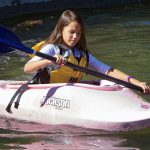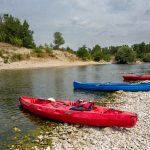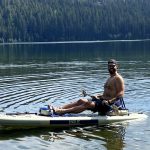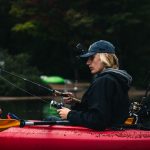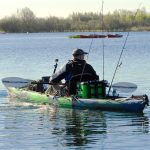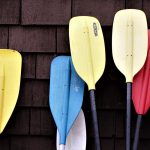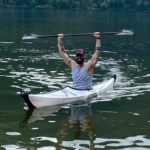Kayaking looks fairly intuitive, and most people quickly work out how to move their kayak around in roughly the right direction. But there’s a difference between making your boat move around and paddling your kayak efficiently.
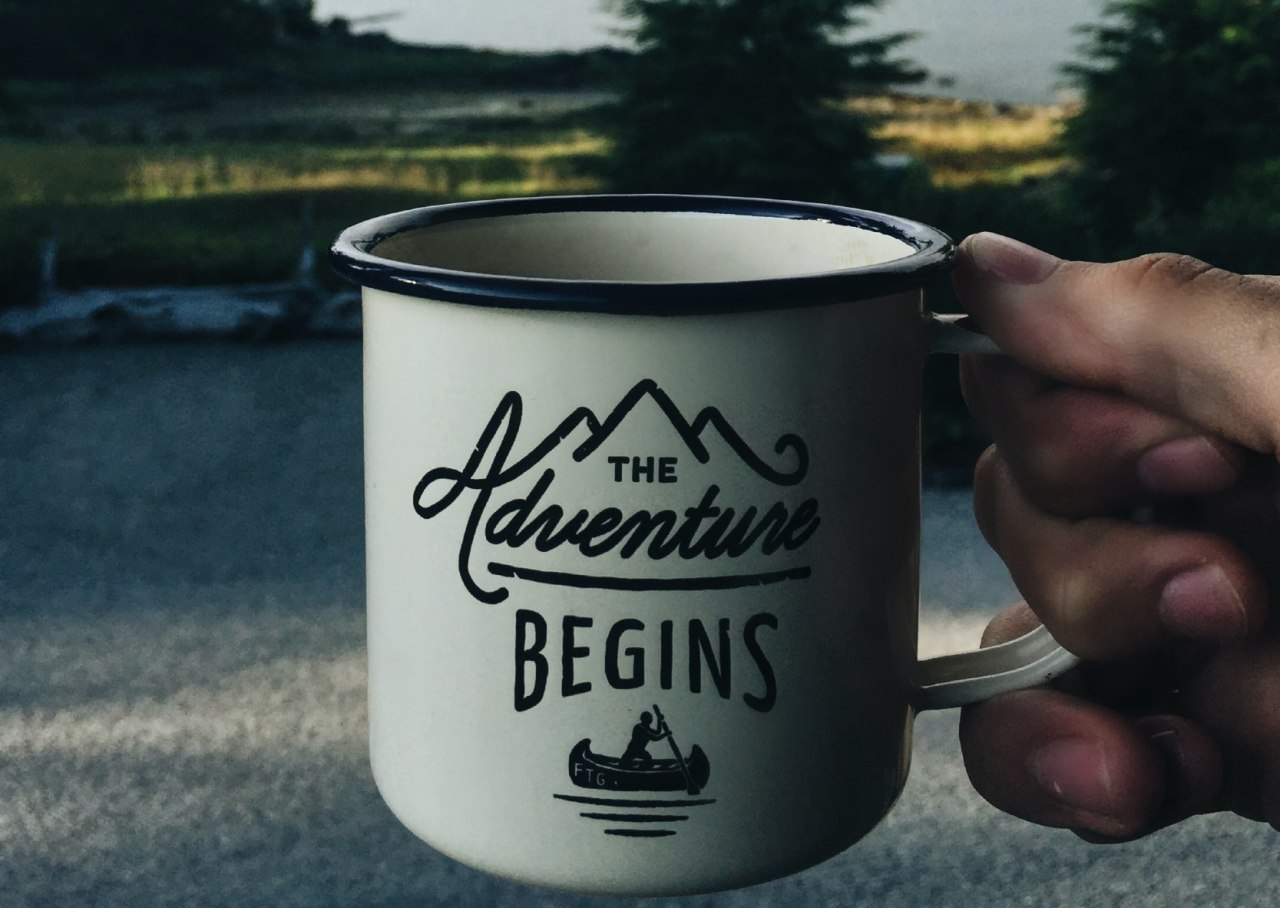
There is nothing easy about buying gifts for kayakers. At first, you might think you could buy them a new kayak, or perhaps a paddle. Unfortunately, there’s a good chance they already have these, and if they don’t then they probably have a particular model or style in mind. Then there’s the price tag – how much do you want to spend on your kayaker?
Buying any of the bigger items can be a bit of a minefield, fraught with potentially expensive disaster. You want to be certain that when your kayaker opens their gift, they’re not only excited to receive it, but will genuinely make use of whatever you buy them. Our list of the best gifts for kayakers can help you to buy a gift for the kayaker in your life that they will love.
Dry Bag
If in doubt, buy a dry bag. You can never have too many of them in various sizes and even colors. Keeping the essentials dry on the water is, well, essential. Recreational kayakers need dry bags to store spare layers, cameras, phones, and snacks. If your kayaker is more into touring or angling, then there is no end to the specific equipment that they will need to stow away.
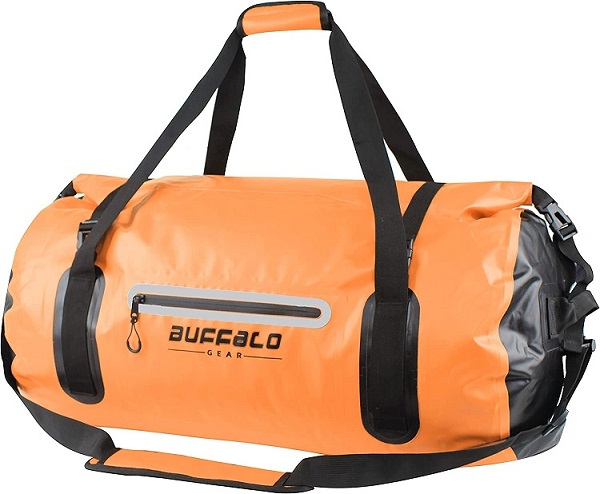
When it comes to buying a dry bag, you generally cannot go wrong with anything around the 10-liter mark, as these fit inside any kayak, as well as being useful for sit-on-tops. Larger dry bags can be useful for some kayakers and canoeists but often end up being difficult to fit into closed cockpit kayaks.
Dry bags also make excellent ‘add-on’ gifts and you can pick up a good quality dry bag without stretching the budget.
Waterproof Case
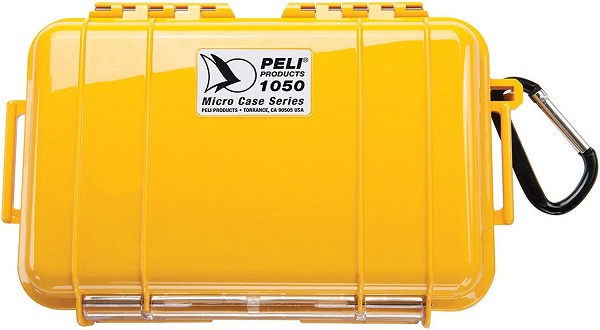
No matter how waterproof your dry bag is, sometimes you want the added protection of a solid case. A shockproof, waterproof case, like this one from Peli, will not only stop your electronic items from getting wet but also protect them from dust and impact.
Kayakers who move around a lot may end up inadvertently standing on a dry bag, or hauling it on their back. This can squash, bend, and even break items like phones and cameras. A waterproof dry case is also a great place to store cash and cards, so they don’t end up getting lost and buried in a dry bag.
These cases come in different styles and sizes. Some bases are fully open inside, while others have foam that can be removed to create a recess that fits your item perfectly. For high-end cameras, phones, laptops, or other expensive electronics, this foam prevents movement and provides better shock resistance. If you just want a case for everything, the more open designs are better suited.
Kayak Gel Seat Pad
If there’s one thing every kayaker wants, it’s the ability to spend more time out on the water. Long days on the water call for comfortable kayak outfitting. Kayakers need supportive backrests, footpegs that hold their feet in position and prevent lower back strain, and of course a seat so that they don’t get a numb butt.
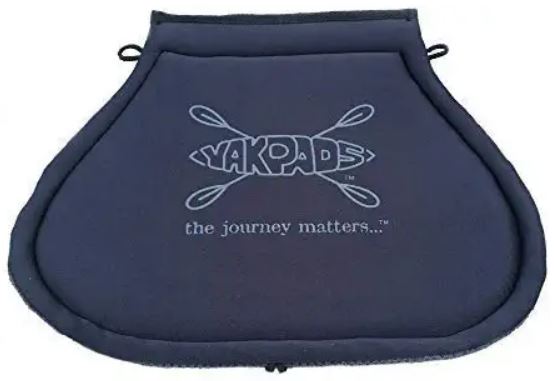
Kayak outfitting has come a long way in the past decade, but there are still some recreational kayaks that leave you without much butt-padding. An extra gel seat pad, like this one from Cascade Creek, can help to make all the difference in kayaker comfort. Gel seating pads also have the added benefit of insulation, so that in winter your butt stays warmer, too.
Waterproof speaker
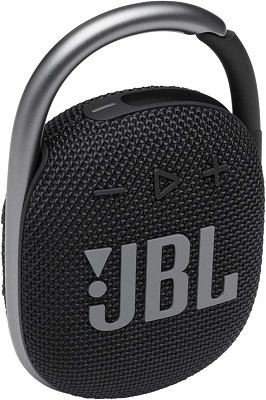
Some kayakers take to the water for peaceful tranquility, others for a more social and relaxing experience. Recreational kayakers who cruise around the water exploring may find their day enhanced by taking music with them, or listening to a podcast or audiobook if they’re out on a long trip.
Waterproof speakers are becoming more common, but this clip-on waterproof speaker from JBL is one of the best on the market. The clip-on design means it can be stored on the outside of a kayak securely, so the sound is not distorted.
Cooler
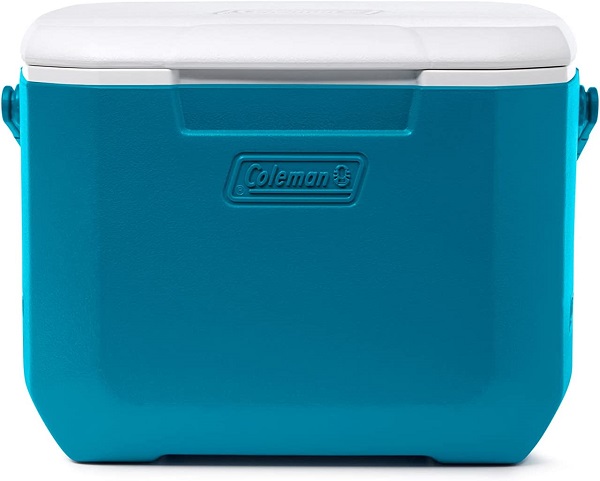
A cool drink on a warm day, keeping your lunch chilled, or as a place to stow your catch. No matter what use you have for a cooler, it’s hard to deny that they are a great choice for kayakers. There is no end of coolers to choose from, with the top-end choices having secure closures and tight seals that reduce the risk of opening if you capsize. For a more affordable option, this 16-quart cooler from Coleman comfortably fits 11 cans as well as 8 lbs. of ice.
Most sit-on-top kayaks have a recess at the rear that is purpose-built for coolers or have space for them elsewhere onboard. If your kayaker paddles a sit-in kayak, it can be more challenging to fit a cooler. Check their model and see whether there is space onboard before you commit to a cooler that is too big for their needs.
Pogies
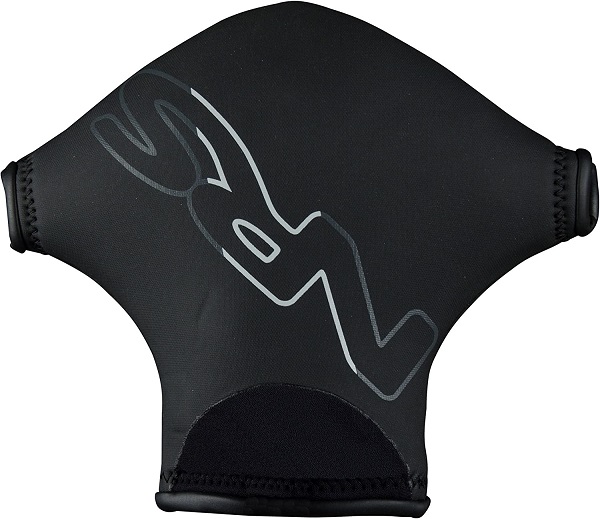
Year-round kayaking is no mean feat. Sure, there are some places where the temperatures stay in a comfortable range all year, but for the most part, winter can be a tough time to drag yourself off to go kayaking. Once you’re all wrapped up in your kayaking gear though, you tend to warm up quickly. That is, apart from your hands. Not only are these exposed to the full force of the cold, but you expect them to control your paddle.
Gloves are a popular choice with kayakers, but there are two issues here. Firstly, you have to know someone’s exact hand size to buy them gloves. Secondly, some kayakers feel that gloves limit their feel on the paddle. Pogies, however, don’t have either of these issues.
A good pair of pogies, like these ones from NRS, acts like a pair of mittens, trapping heat around your hands and keeping them warm. Simply strap these neoprene mitts to your paddle shaft, slide your hands in, and paddle away. Even better, if you need to use your – now warm – fingers for tying knots or opening a water bottle, you can free your hand and have full dexterity.
Knife
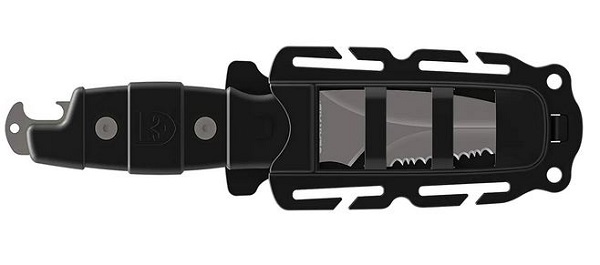
If there is one essential item that every kayaker should carry in their PFD, it’s a knife. From a safety standpoint, these allow kayakers to cut their way out of ropes or lines if they become entangled and can save lives. From a more versatile point of view, there are loads of uses that a multi-purpose knife can have.
Perhaps most popular with anglers, knives like this blunt-tip one from Gear Aid, can be used as a screwdriver, a line cutter, and a bottle opener, among other uses. For even more uses, you could consider a multi-tool, like this Leatherman.
Paddle Float
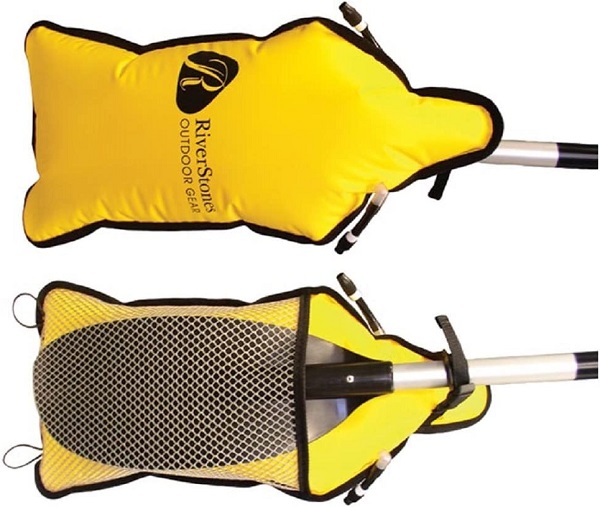
Paddle floats are most commonly used by touring or sea kayakers. These simple bits of gear might not look like much, but make all the difference when it comes to self-rescue. A paddle float, like this one from Riverstones, can be attached to a paddle blade to create an outrigger and allow the paddler to climb back into their kayak.
Paddle floats have also been used for many years as an aid to the kayaker looking to develop their rolling. If you know a kayaker who is learning to roll, a paddle float could be the piece that links the stages together. Paddle floats are typically used by closed-cockpit kayakers, rather than sit-on-top kayakers.
Paddle Leash
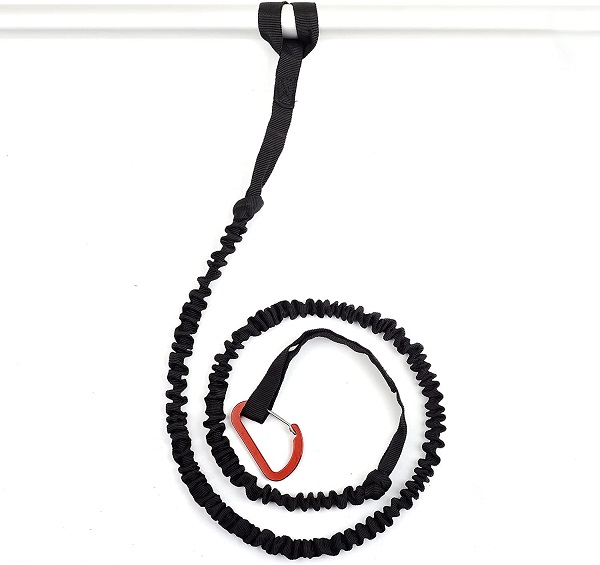
There’s nothing worse than being up a creek without a paddle. But what about being out on a windy lake without a paddle, or out at sea? A paddle leash attaches your kayak paddle to you so that even if you capsize, you won’t lose your paddle.
Solo kayakers are most at risk of losing their paddle, so if you know someone who routinely paddles alone and doesn’t have a paddle leash, consider one for their next gift. This paddle leash from Oceanbroad attaches easily to any paddle and clips securely to your PFD. Paddle leashes are not suited to river kayakers, where they can be an entrapment hazard.
Paddle Grips
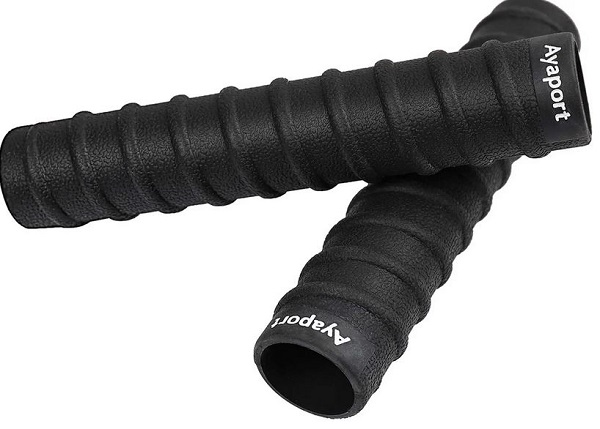
Paddles get cold. They’re hard and rigid and can cause blisters over time. By strapping a paddle grip, like these ones from Yakgrips, to your paddle shaft, most paddlers find they are more comfortable and can paddle for longer.
There are other benefits, too. These grips can stop the paddle from sliding around in your hands, especially if you have suncream or bug spray on. By positioning them appropriately on the paddle, these grips also act as a visual reminder for beginners to show where their hands should remain at all times for optimal kayaking.
Kayak Compass
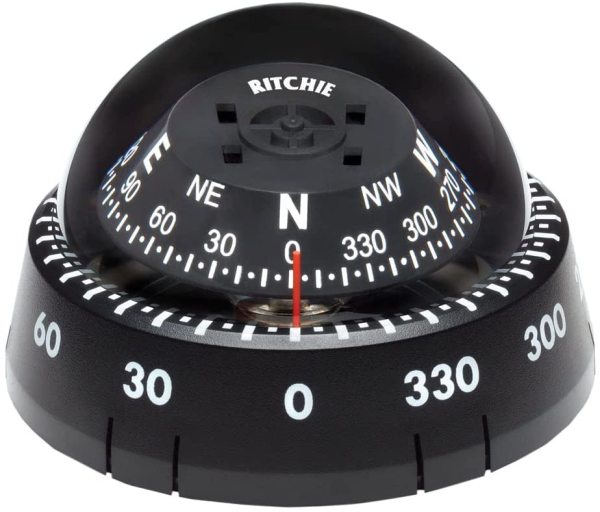
As kayakers start to take their journey further, they will need to carry some navigational aids with them. GPS devices or phone apps will only help so much on the water, but a quality kayak compass can help to keep kayakers safe on the water.
Compasses are available for every type of kayak but are generally used on touring or sea kayaks. Many of these kayaks will have a purpose-built recess to fit the compass, but there are universal compasses on the market that fit almost any kayak.
Of course, the compass is just one part of the navigation system. Your kayaker will also need maps, or charts, and more importantly the knowledge to use them properly. Perhaps along with your compass, you could get them some navigation lessons so you know they’ll always return home.
Waterproof Headlamp
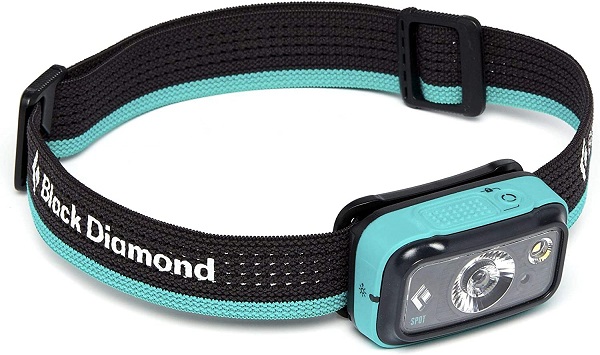
Some kayakers like to push the boundaries for how long they can be on the water. This might mean early starts, late finishes, or both. A headlamp can extend time on the water, but only if you know that it’s bright enough to guide you home and won’t be damaged by exposure to water.
This headlamp from Black Diamond is light enough to fit in your PFD pocket, is fully waterproof, and has a 350-lumen output. This is bright enough to find your way across the lake and back to your car and coming from a company with such a rich mountaineering background, you know you’re getting a quality piece of kit.
Insulated Flask
Is there a better place to sit and have a coffee than out on your kayak? The last thing you want to be doing in the middle of a lake is pulling out a stove and brewing up. A quality insulated flask, like this one from Thermos, lets you take several mugs of coffee out with you so you can stop and enjoy a cup of joe throughout the day.

In warmer areas, insulated cups can be used to keep your drinks cool and let you stay hydrated on the water. Whether you buy a single mug that can be drunk directly, or a flask that can make multiple cups is up to you, but the quality is important. There’s nothing worse than going to make yourself a lunchtime drink and finding your hot water is lukewarm at best.
Changing Mat

Getting changed to go kayaking is an art form. Often, you end up balancing on one foot, trying to not step into the mud as you acrobatically maneuver yourself into a wetsuit or drysuit. A kayak changing mat, like this one from Parallax, gives your kayaker a designated space to get changed. Even better, you can leave your wet gear on the mat and cinch it into a bag to carry home.
Changing Robe
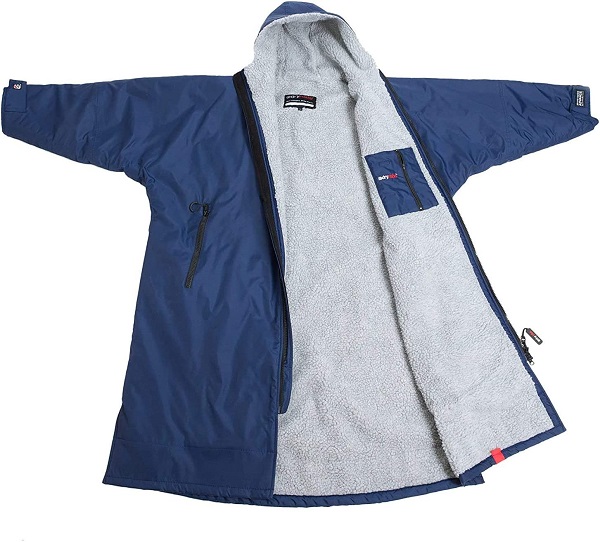
After a day on the water, you want to be able to wrap up warm and get changed quickly. Trying to keep yourself covered with a towel while you remove your wet clothing can leave you feeling exposed. A changing robe, like the popular DryRobe, takes the risk out of changing.
These robes are toweled inside, and windproof on the outer, so you can dry off as you change. Coming down to your knees, this will keep you fully covered up and give you your own personal changing room. They’re warm, too. In fact, many kayakers will throw these over their kayaking gear to warm up, or keep them on long after they have dressed.
Kayaking Books

When not out kayaking, the avid kayakers will be talking about kayaking, thinking about kayaking, watching kayaking videos, and reading books about kayaking. Kayaking books can either be instructional, like this Ultimate Guide to Kayak Fishing, or inspirational, like this kayaker’s Journey into the Heart of Alaska. Then there are guidebooks, showing your kayaker new areas and giving advice on how and where to kayak.
A kayaker’s bookshelf will burst with books like these, but there is always room for one more. Try to match the book with their specific area of interest – don’t buy a white water guidebook for a kayak angler and vice versa. If you can sneak a glance at their bookshelf to make sure you’re not doubling up on a title, that’s a bonus too.

